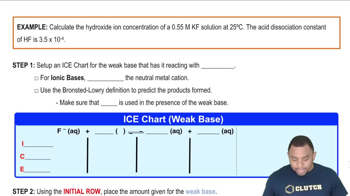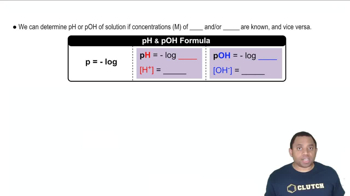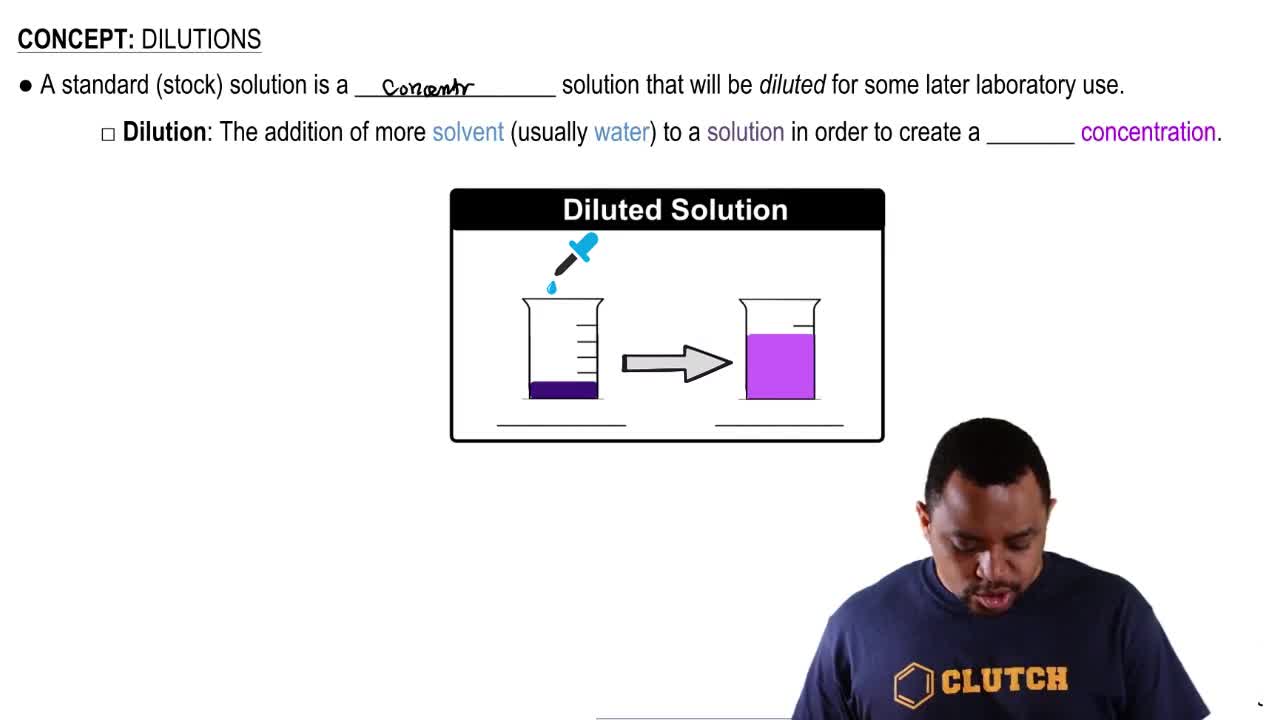Here are the essential concepts you must grasp in order to answer the question correctly.
Strong Bases and Hydroxide Ion Concentration
Strong bases, like KOH and Ba(OH)2, completely dissociate in water to produce hydroxide ions (OH-). The concentration of OH- can be calculated directly from the molarity of the strong base solution. For example, a 0.182 M KOH solution will yield an OH- concentration of 0.182 M, as each mole of KOH produces one mole of OH-.
Recommended video:
Hydroxide Ion Concentration Example
pH and pOH Relationship
The pH scale measures the acidity or basicity of a solution, while pOH measures the concentration of hydroxide ions. They are related by the equation pH + pOH = 14 at 25°C. To find the pH from the OH- concentration, first calculate pOH using pOH = -log[OH-], then use the relationship to find pH.
Recommended video:
Dilution and Mixing Solutions
When mixing solutions, the total volume and the concentrations of the solutes must be considered. For example, when mixing 20.0 mL of 0.015 M Ba(OH)2 with 40.0 mL of 8.2 x 10^-3 M NaOH, the total volume becomes 60.0 mL, and the total OH- concentration can be calculated by finding the moles of OH- from each solution and dividing by the total volume.
Recommended video:
Solution Dilution Process
 Verified step by step guidance
Verified step by step guidance

